AN fittings and hoses are often found installed on high performance and race cars. AN hoses are used for fuel, oil, coolant and hydraulic fluids. AN stands for Army-Navy as the specification was developed based on a standard for flexible fluid connections used during World War II. They are often used in aviation but like most high performance aviation equipment they eventually ended up on race cars and then street cars. AN uses a 37 degree flared fitting to form a metal to metal seal.
People use AN fittings because they look cool and provide a secure fitting that seals hoses better than traditional push on nipples and hose clamps. They form a serviceable connection that provides a reliable seal. AN fittings can also be used for leak free bulkhead pass throughs like those found on the outside of fuel cells.
AN Fitting Types
There are 3 common types of AN fittings connections used on race cars or high performance vehicles. These relate to how the hose is connected, including:
Crimp type
Reusable hose ends
Push lock
All of these can also come in either non-swivel or swivel making for easier installation.
Crimp type fittings (not pictured) are typically used at facilities where they build lots of hoses as it requires a hydraulic press with specific dies to properly crimp the collar onto the hose ends. These machines and dies tend to be expensive so you don't see them used by individuals or small race teams.
The Crimp style hose requires a new crimp collar to be reused but are considered to be strongest most reliable fitting if crimped correctly.
The two most common types you will see used by the home mechanic or small race team is either reusable hose ends or push lock. The reason for this is they can be assembled and serviced using hand tools. They are both about the same size and form factor.
The reusable hose ends use a two part system to hold the hose in place. Typically they are used with braided hose either stainless steel or nylon braid. They come in a variety of different sizes, angles and colors. They are slightly heavier but are claimed to have a more secure hose clamping method than push locks.
The hose end sockets are unthreaded from the main body. The braided hose is then inserted into the socket. During assembly the socket is threaded over the nipple forcing the hose inner diameter over taper. The shapes and features clamp the hose in place to handle pressure and prevent leaks. The female nut end are then tightened onto the corresponding male fitting to form a complete seal on the tapered surface.
Push lock type hoses are the easiest to assemble as they come as a single piece unit with a barb end. Push locks are used with coated hoses as they do not have a feature to prevent the braid from unravelling. The hose is forced over the barb and seated. The barb alone can be used to hold the hose in place or an additional clamp can be used.
AN Sizes
The AN sizing can be confusing at first but once you get used to it you can tell the size just by looking at the fitting. The AN size reference the Outer Diameter of hose in 1/16th of an inch increments. For example a -3 AN hose has an external diameter of 3/16th of an inch. Similarly -8 AN hoses are 8/16 = 1/2 inch in outer diameter.
The most common uses of AN hoses on race cars:
-3 AN fittings used for brake lines
-4 AN fuel hoses
-6 AN fuel or coolant hoses
-8 AN a very common size for coolant and oil
-10, -12 AN fittings are used on either coolant or vent hoses
AN Hose Types
AN Hoses come in a variety of different types and materials depending on the applications. The main differences are related to fluid type, temperature, pressure and abrasion resistance. Most hoses have an inner liner that is either rubber, Chlorinated Polyethylene (CPE) synthetic rubber or Polytetrafluoroethylene (PTFE) known as Teflon. Then a layer of mesh braid either stainless steel or nylon. Some hoses have dual braided mesh or a smooth outer covering. Depending on the company and design the hose may have various layers of different materials to handle specific fluids, extreme temperatures or high pressures.
Braided hoses offer great abrasion resistance but are harder to assemble than smoother coatings as they need a cover/socket to prevent unravelling of the braided strands. The stainless steel braid can rub against other components wearing through them like a file. Braided nylon hoses have an inner stainless steel braid covered by an outer nylon mesh to prevent this abrasion. The nylon mesh however can get dirty and gunked up with contaminates. These types of hoses are typically used with crimp or reusable type AN fittings.
Push lock fitting use hoses with smooth outer skins over braided mesh. The braided mesh strengthens and protects the inner liner that handles the fluid. Push locks are often used with fuel and oil and therefore must be compatible with the harsh fluids. Common types include silicon or PTFE. Alcohol or e85 fuels can degrade some types of inner liners and so must be used with compatible hose types. The smooth outer cover hoses can look like generic rubber hose but don't be fooled these hoses have multi-layer designs often with specific mesh weaves for the application. The multiple layer design allows the hose to be flexible but still maintain strength under high temperatures and pressures.
AN Fitting Adapters
Most engine blocks and OEM fittings use either slip-on type or National Pipe Thread (NPT) fittings. There are a variety of different adapters and fitting types that can be used to interface AN hardware with engine blocks, cylinder heads, radiators and oil coolers.
AN fittings are produced with a variety of different angles to assist with routing and clearance they come in straight, 30, 45, 60, 90, 120, 150 and even 180 degrees. Some fittings even come with special ports for pressure or temperature sensors. Tee fittings can be used for coolant where there are multiple lines. Bulkhead fittings can be used for passing fluids through either the firewall or into fuel cells. They have AN fittings on both sides with a washer and clamping nut to provide a leak free seal against the bulkhead surface.
AN Tools and Equipment
AN fittings are commonly made of aluminum and can be marred by standard wrenches. There are specific aluminum AN wrenches that are made of anodized aluminum to prevent damage to the surface of the fittings.
Some common assembly tools include AN wrench, pinch clamp pliers, masking tape, bench vise and a cutter for the hoses. There are also aluminum vise jaws used to protect the finish and shaped to hold the fittings. Depending on if you use worm gear hose clamps, then you will also need a nut driver.
Assembling AN Fittings and Hoses
The easiest way to learn how to assemble AN hoses and fitting is to watch it being done. Below we include a step by step guide with photos for you to follow along. This isn't the only way to assemble them it is just the way that works for us.
Fitting assembly Quick Tips:
Use a vise with aluminum jaws
Good clean cuts
Masking tape can help keep braids together when cutting
If using cut off wheels rinse and scrub out the hose ends
Make sure the hose bottoms out in the socket
Press down on the hose when tightening to prevent it backing out
Load Into Bench Vise
Load the hose in the bench vise and wrap masking tape over the area to cut to ensure a nice clean cut and prevent the braid from unravelling.
Clean Cut THe Hose
The hoses are commonly cut with a cut off wheel on a grinder, large electrical cable cutters or a sharp chisel and hammer. All methods have their draw back.
Cut Off Wheel: works great but produces debris that gets into the hose. You must clean out the little bits of burnt up hose otherwise it will end up in your filters or worse engine.
Electrical Cable Cutters: The cutters chomp through the hose with the sharp cutting teeth. Use masking tape to prevent the braid from fraying. The problem with the cutters is that it can crush the inner lining hose. You might need to reshape it to round with a screwdriver or drift.
Sharp Chisel: Nice clean cut provided the chisel is sharp. It can take a few hits with the hammer to get through. This won't produce debris and combined with masking tape can prevent fraying. Similar to electrical cutters this can also crush the inner hose lining and gets worse with numerous whacks of the hammer.
Clean Up the ENds
Depending on the cutting method you might still have some uneven ends to clean up using side cutters. If you used the cut of wheel make sure to scrub out the debris from the hose. Often just rinsing or using compressed air won't get the little bits of burnt up hose. If you used the other methods you might need to reshape the inner liner to round with a drift or screwdriver.
INSERT Hose into Socket
The next step of the process is to clamp the fitting socket into the bench vise. Use the aluminum vise jaws to protect the fitting finish. Push the hose down into the socket and twist as you insert it until it bottoms out.
Screw Socket onto the Fitting
Apply lubricant to the threads. Start hand threading the socket down onto the fitting. Be careful not to strip the threads when starting. Tighten the initial threads by by hand being careful not to strip the threads when starting.
Tighten the Fitting
Once the hose goes over nipple you will need to tighten using either an assembly tool or a standard AN wrench.
Inspect the finished fitting and continue to complete the second side of the hose.
We love supporting companies that support racers. As you may have noticed already we use Redhorse Performance hoses and fittings they provide high quality parts and are a great supporter of motorsports.
Want more motorsports articles and tech tips sign up for our Monthly Newsletter.

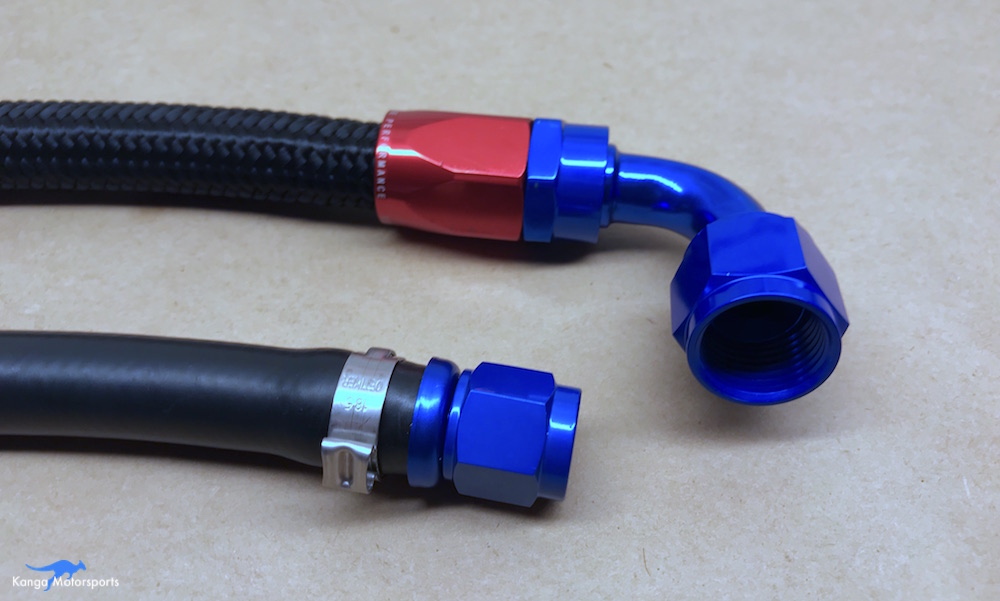




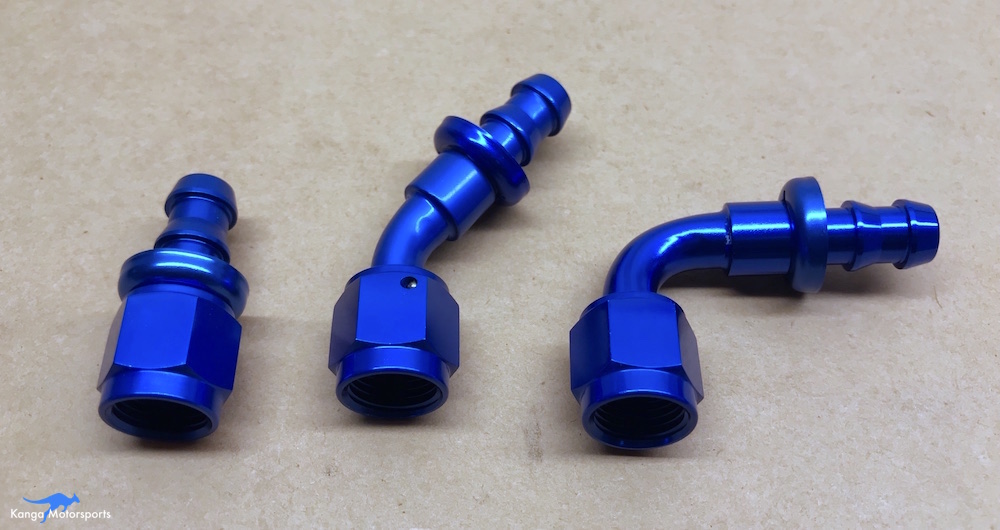



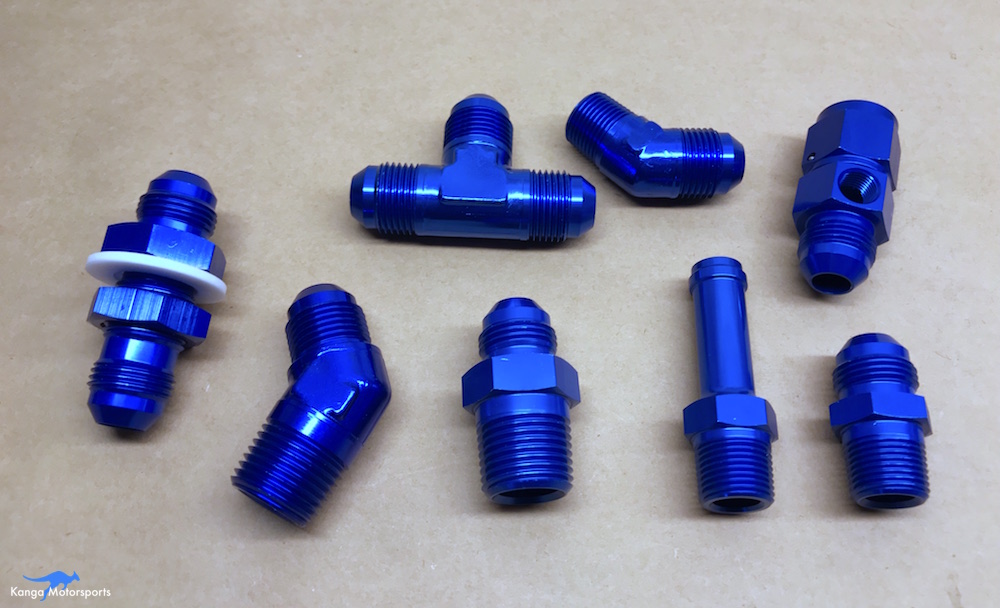




















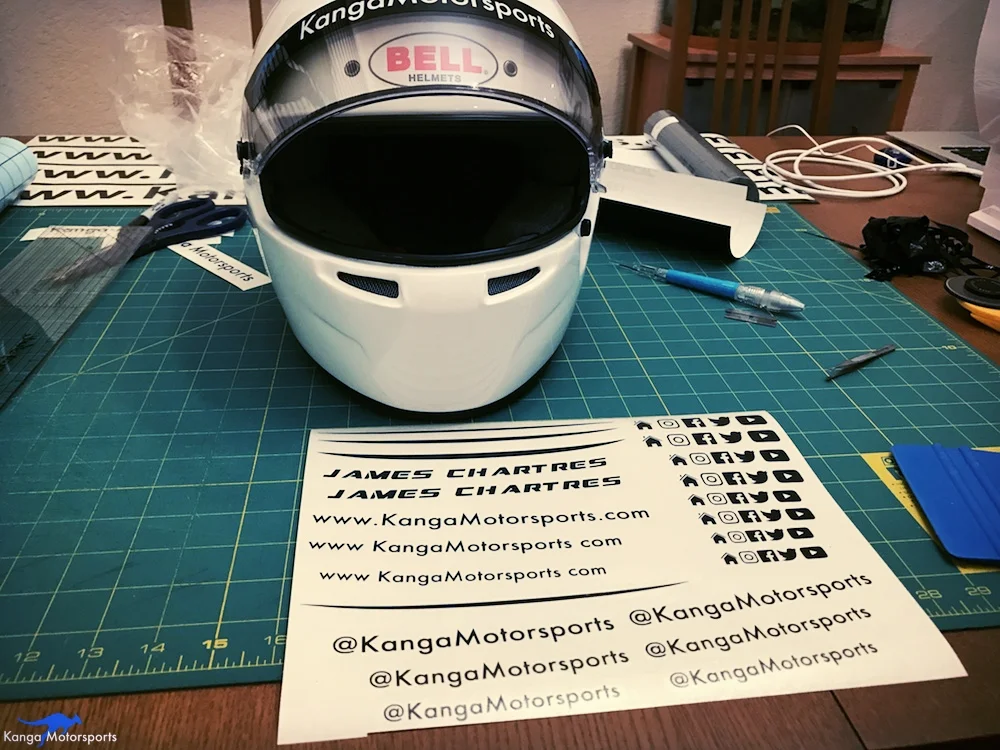

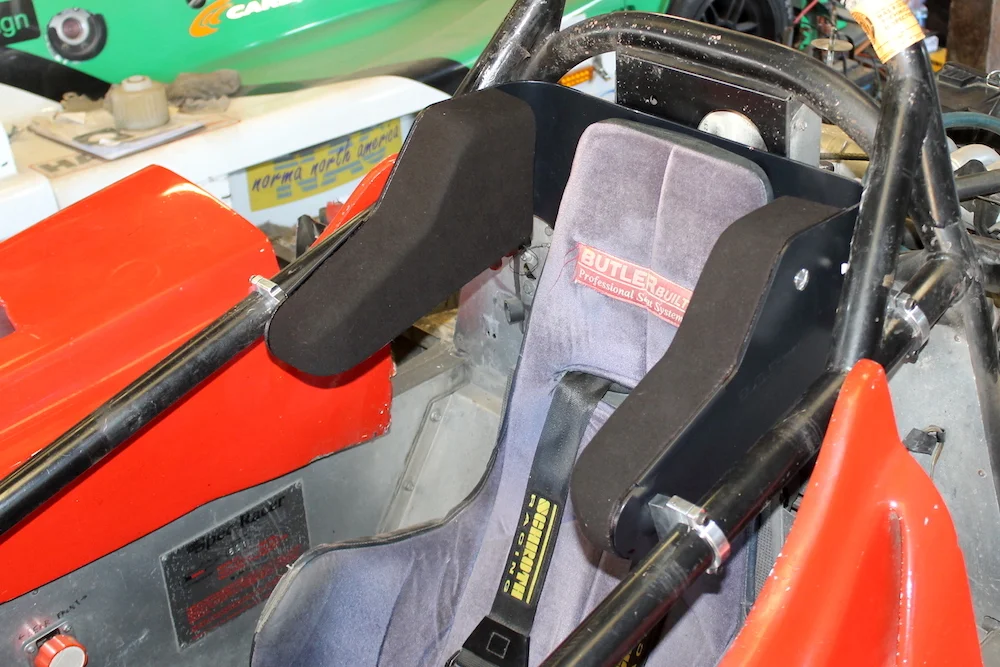

We decided to replace the old bent and misshaped suspension rockers with the new lighter and stiffer tubular rockers. The step by step guide should make it easier for those attempting the work themselves.